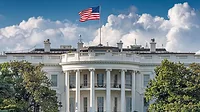Canadian Government Grants CPCA’s Exemption Request

OTTAWA, Ontario - The Canadian government has granted the Canadian Paint and Coatings Association's (CPCA) request for an exemption from the proposed countermeasure tariffs on U.S. goods coming into Canada as of July 1, 2018.
In June, the government of Canada invited Canadian stakeholders to comment on a list of proposed retaliatory tariffs on U.S. goods in response to U.S. tariffs on Canadian steel and aluminum. In a formal submission to the Department of Finance, CPCA noted the proposed tariff on imported U.S. steel drums and cans (proposed Tariff 7310.29) could be interpreted to include pails, cans, vats and totes used by Canadian paint and coatings manufacturers. With no Canadian manufacturer of these pails and cans, particularly for architectural paint and aerosol sprays, Canadian-based manufacturers would face millions of dollars in higher input costs in relation to competing finished products imported from the United States.
According to CPCA President and CEO Gary LeRoux, “The North American paint and coatings industry is highly integrated with many U.S.-owned companies operating manufacturing plants here in Canada, supported by cross-border supply chains. These tariffs could be the last straw for many Canada-based manufacturers, especially small- and medium-sized enterprises, already considering possible relocation to U.S. jurisdictions with lower taxes, fewer regulations, lower energy and labor costs, ongoing exchange rate challenges, and other incentives for plant relocation.”
Due to increasing consolidation in recent years, nearly half of all paint and coatings products sold in Canada are imported from plants in the United States, an increase of nearly 15% over the past decade. Over that time, consolidation has resulted in the closure of Canadian manufacturing plants and the relocation of many head offices to the United States.
The proposed countermeasure would have imposed tariffs on all Canadian paint and coatings manufacturing facilities, both Canadian and U.S.-owned, and further exacerbated current competitive and regulatory alignment challenges between the two countries.
Looking for a reprint of this article?
From high-res PDFs to custom plaques, order your copy today!




